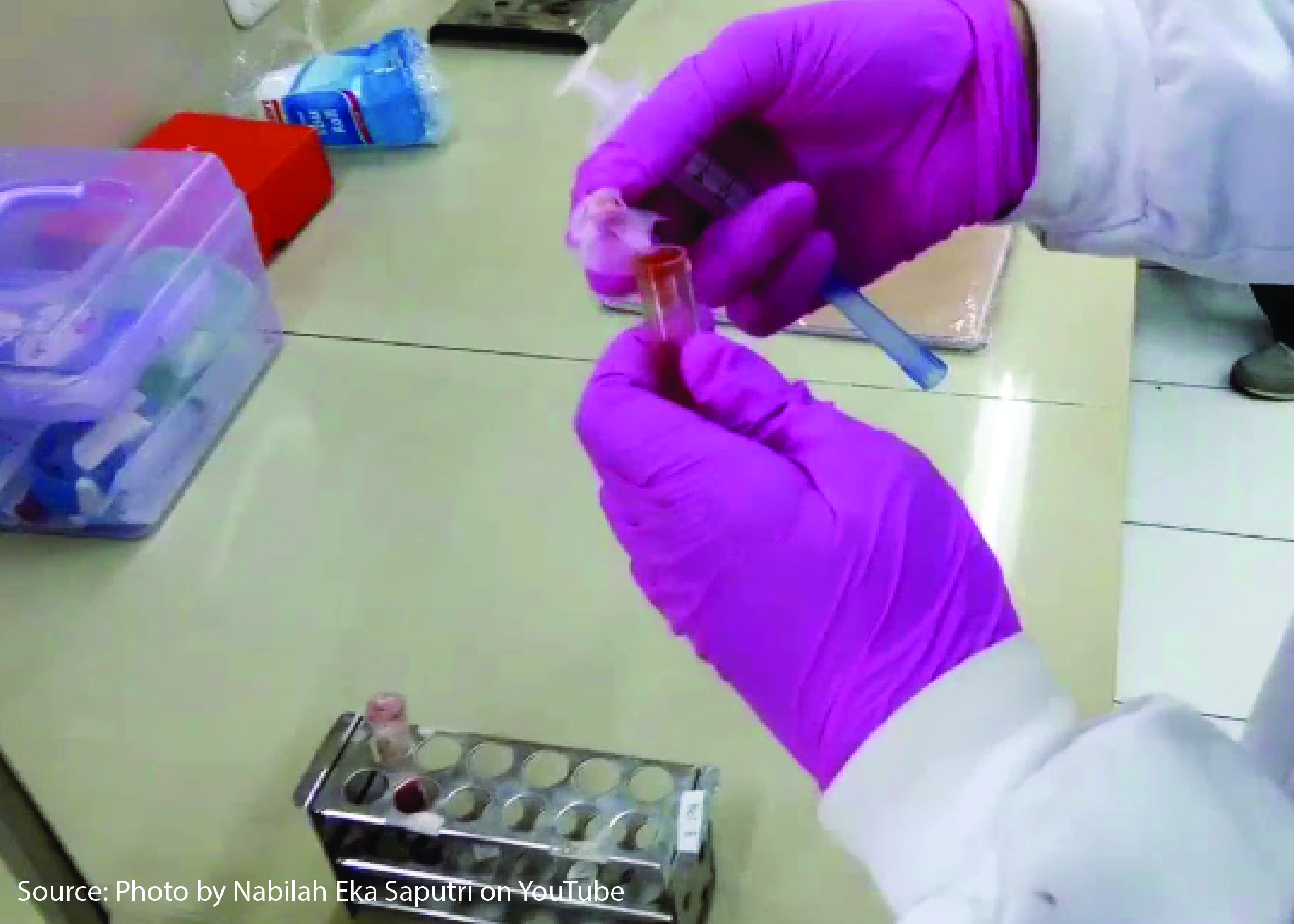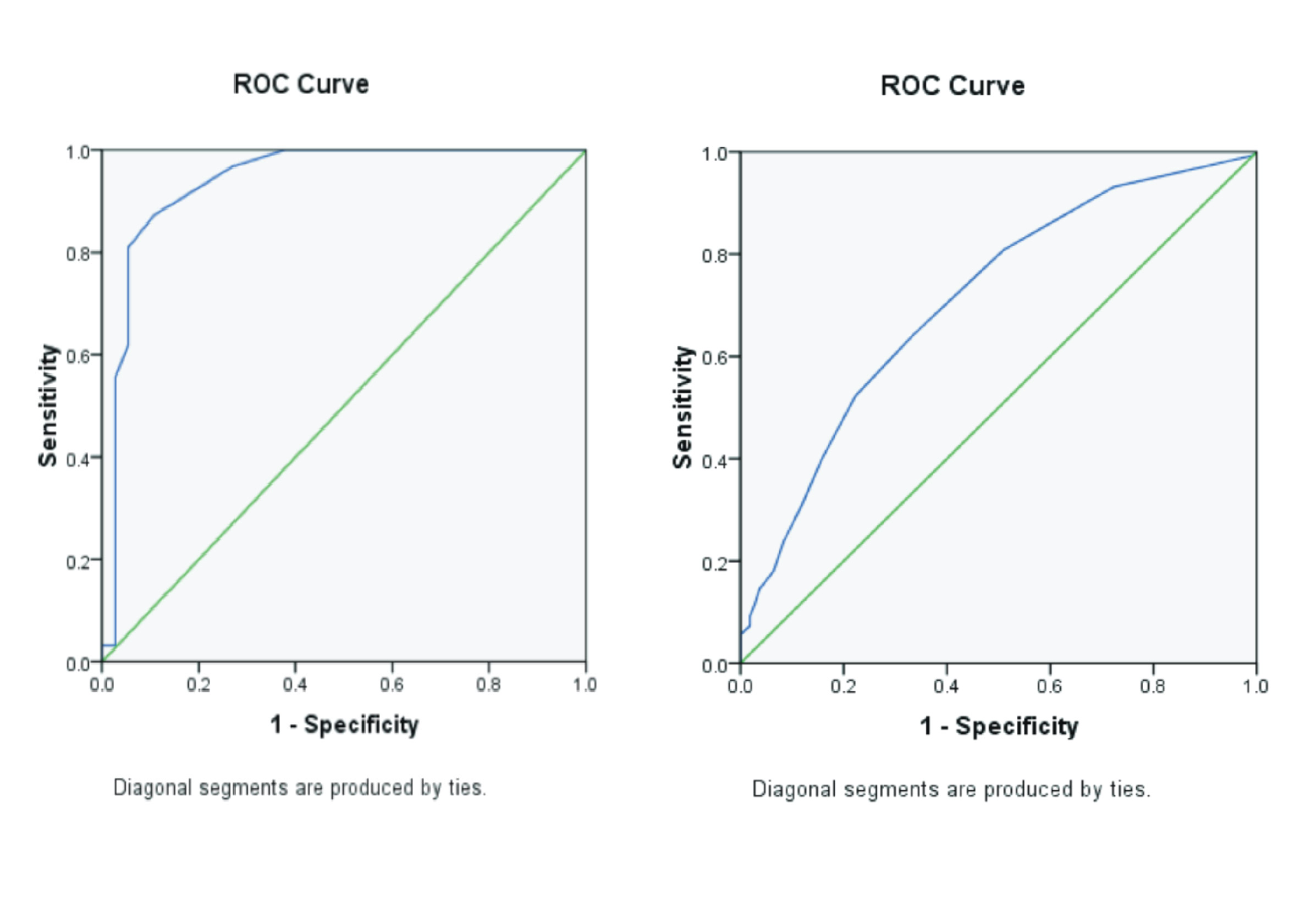THE INFLUENCE OF BLOOD VOLUME AND STORAGE DURATION ON THE ERYTHROCYTE SEDIMENTATION RATE (ESR) VALUE USING THE WESTERGREN METHOD

Downloads
Background: Hematological examination is conducted to determine the condition of blood and its components, which are used to establish a diagnosis, support a diagnosis, make a differential diagnosis, monitor disease progression, assess the severity of an illness, and determine the initial prognosis of a disease. Phlebotomy procedures in the pre-analytical stage are not always successful and sometimes encounter failure. Inappropriate anticoagulant administration can lead to erroneous hematological examination results, including Erythrocyte Sedimentation Rate (ESR) examination results. Purpose: This research aims to examine the influence of blood volume and storage duration on the Erythrocyte Sedimentation Rate (ESR) value using the Westergren method. Method: The Westergren method utilizes 5 venous blood samples with a ratio of blood volume to 3.8% anticoagulant at 4 : 1, 3 : 1, and 2 : 1, with sample storage durations of 0 and 3 hours at room temperature. Result: The average ESR values with a ratio of 4 : 1, at 0 hours, were 5.20 mm/hour and at 3 hours were 3.60 mm/hour. The average ESR values with a ratio of 3 : 1, at 0 hours, were 6.20 mm/hour and at 3 hours were 4.40 mm/hour. The average ESR values with a ratio of 2 : 1, at 0 hours, were 7.60 mm/hour and at 3 hours were 5.60 mm/hour. Conclusion: There is a significant influence of blood volume (p-value < 0.05) and storage duration (p-value = 0.05) on the Erythrocyte Sedimentation Rate (ESR) value using the Westergren method.
Adhikari, B.C., Patra, S., Chanda, C., Shrivastava, R.K., 2017. Erythrocyte Sedimentation Rate, Measurement by Capillary Tube Method, (MICRO ESR)- Best Method for Neonate and Small Children. Journal of Medical Science and Clinical Research Vol. 5(5), Pp. 22135-22137.
Akkiz, H., Carr, B.I., Bag, H.G., Karaoğullarından, Ü., Yalçın, K., Ekin, N., Özakyol, A., Altıntaş, E., Balaban, H.Y., Şimşek, H., Uyanıkoğlu, A., Balkan, A., Kuran, S., Üsküdar, O., Ülger, Y., Güney, B., Delik, A., 2021. Serum Levels of Infammatory Markers CRP, ESR and Albumin in Relation to Survivalf for Patients with Hepato Cellular Carcinoma. International Journal of Clinical Practice Vol. 75(2), Pp. e13593.
Artha, D., Warsyidah, A.A., Fitriani, M., 2019. Perbandingan Hasil Pemeriksaan Led Metode Westergren antara Sampel dengan Pengenceran dan Sampel Tanpa Pengenceran. Jurnal Media Laboran Vol. 9(2), Pp. 18-21.
Aulia, S.S.N., 2017. Gambaran Nilai Laju Endap Darah (LED) menggunakan Cara Westergren dan Cara Otomatik (Doctoral Dissertation). AAK Borneo Lestari.
Cahya, F., 2021. Perbandingan Jumlah Eritrosit pada Sampel Darah 3 mL, 2 mL, dan 1 mL dengan Antikoagulan K2EDTA. Jurnal Ilmiah Kesehatan Media Husada Vol. 10(1), Pp. 59-64.
Dekayana, A., 2019. Hitung Laju Endap Darah (LED), Cetakan Pertama. ed. Uwais Inspirasi Indonesia, Ponorogo.
Dyahwisnu, Candrakirana, 2018. Perbedaan Nilai Laju Endap Darah Metode Westergren pada Pemeriksaan Langsung dan Ditunda 6 Jam pada Suhu Ruang (undergraduate). Universitas Muhammadiyah Semarang, Faculty of Nursing and Health.
Gandasoebrata, R., 1968. Penuntun Laboratorium Klinik, Cetak Ulang. ed. Dian Rakjat, Universitas Michigan.
Harrison, M., 2015. Erythrocyte Sedimentation Rate and C-Reactive Protein. Aust Prescr Vol. 38(3), Pp. 93-94.
Hidriyah, S., Rahmita, M., Trisna, C., 2018. Perbandingan Nilai Laju Endap Darah (ESR) Antara Metode Westergren dengan Metode Mikro Esr pada Penderita Tuberkulosis Paru. Jurnal Medikes (Media Informasi Kesehatan) Vol. 5(2), Pp. 182-191.
Kratz, A., Plebani, M., Peng, M., Lee, Y.K., McCafferty, R., Machin, S.J., International Council for Standardization in Haematology (ICSH), 2017. ICSH Recommendations for Modified and Alternate Methods Measuring The Erythrocyte Sedimentation Rate. International Journal of Laboratory Hematology Vol. 39(5), Pp. 448-457.
Masito, S., 2020. Gambaran Nilai Laju Endap Darah pada Penderita Diabetes Melitus Tipe 2. Politeknik Kesehatan Kementerian Kesehatan Palembang.
Møller, M.M., Simon, 2006. PCR, 2 nd. ed. Taylor & Francis, London.
Narang, V., Grover, S., Kang, A.K., Garg, A., Sood, N., 2020. Comparative Analysis of Erythrocyte Sedimentation Rate Measured by Automated and Manual Methods in Anaemic Patients. Journal of Laboratory Physicians Vol. 12(4), Pp. 239-243.
Nugraha, G., 2017. Buku Panduan Pemeriksaan Laboratorium Hematologi Dasar, 2nd Edition. ed. Trans Info Media.
Patel, L., Gizinski, A.M., 2018. A Primer on Rheumatologic Laboratory Tests: What They Mean and When to Order Them. Primary Care Vol. 45(2), Pp. 181-191.
Rahmawati, C., Aini, 2019. Pengaruh Dosis Antikoagulan EDTA 10% dan Natrium Sitrat 3,8% pada Pemeriksaan Laju Endap Darah. Jurnal Penelitian dan Kajian Ilmiah Kesehatan Politeknik Medica Farma Husada Mataram Vol. 5(1), Pp. 79-85.
Sari, I., 2023. Edukasi Pengaruh Volume Sampel Darah pada Teknik Flebotomi terhadap Pemeriksaan Laboratorium. Khidmah. Khidmah Vol. 5(1), Pp. 116-123.
Sitepu, R. B. R., 2019. Analisa Laju Endap Darah pada Penderita Diabetes Melitus Tipe 2 yang Dirawat Inap di RSUP H. Adam Malik Medan.
Subiyati, 2017. Perbandingan Jumlah Trombosit pada Pemberian Antikoagulan EDTA Cair, EDTA Serbuk, dan EDTA Vacutainer (Skripsi). Universitas Muhammadiyah.
Syafa’ati, F.L., Sukeksi, A., Santosa, B., 2017. Perbedaan Hasil Kadar Hematokrit Metode Mikrohematokrit dengan Antikoagulant EDTA Cair dan Serbuk. Fakultas Ilmu Keperawatan dan Kesehatan Universitas Muhammadiyah, Semarang.
Tishkowski, K., Gupta, V., 2024. Erythrocyte Sedimentation Rate. In: StatPearls. StatPearls Publishing, Treasure Island (FL).
Tutwiler, V., Litvinov, R.I., Lozhkin, A.P., Peshkova, A.D., Lebedeva, T., Ataullakhanov, F.I., Spiller, K.L., Cines, D.B., Weisel, J.W., 2016. Kinetics and Mechanics ofClot Contraction are Governed by The Molecularand Cellular Composition of The Blood. Blood Vol. 127(1), Pp. 149-159.
Wu, S., Zhou, Y., Hua, H.-Y., Zhang, Y., Zhu, W.-Y., Wang, Z.-Q., Li, J., Gao, H.-Q., Wu, X.-H., Lu, T.-X., Hua, D., 2018. Inflammation Marker ESR is Effective in Predicting Outcome of Diffuse Large B-cell Lymphoma. BMC Cancer Vol. 18(1), Pp. 997.
Yin, W., Xu, Z., Sheng, J., Xie, X., Zhang, C., 2017. Erythrocyte Sedimentation Rate and Fibrinogen Concentration of Whole Blood on Fluences the Cellular Composition of Platelet-Rich Plasma Obtained from Centrifugation Methods. Experimental and Therapeutic Medicine Vol. 14(3), Pp. 1909-1918.
Copyright (c) 2025 Journal of Vocational Health Studies

This work is licensed under a Creative Commons Attribution-NonCommercial-ShareAlike 4.0 International License.
- The authors agree to transfer the transfer copyright of the article to the Journal of Vocational Health Studies (JVHS) effective if and when the paper is accepted for publication.
- Legal formal aspect of journal publication accessibility refers to Creative Commons Attribution-NonCommercial-ShareAlike (CC BY-NC-SA), implies that publication can be used for non-commercial purposes in its original form.
- Every publications (printed/electronic) are open access for educational purposes, research, and library. Other that the aims mentioned above, editorial board is not responsible for copyright violation.
Journal of Vocational Health Studies is licensed under a Creative Commons Attribution-NonCommercial-ShareAlike 4.0 International License














































